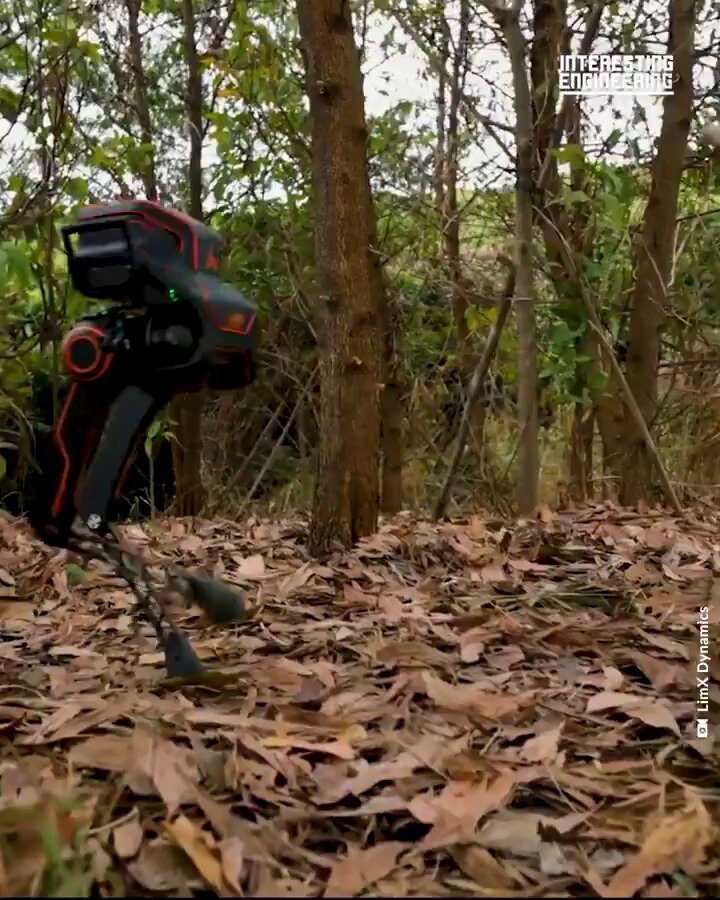The world of robotics is advancing at an unprecedented pace, and one of the most exciting developments is the Biped Robot P1, which has recently demonstrated its ability to master wilderness navigation. This breakthrough is a significant step forward in the field of #ArtificialIntelligence, #Robotics, and #Engineering, showcasing the potential of #Innovation and #FutureTech in creating #Autonomous systems capable of navigating complex environments.
Navigating the Wilderness
The Biped Robot P1 is designed to navigate challenging terrains, making it an ideal candidate for tasks that require movement through unstructured environments. Unlike traditional robots that rely heavily on predefined paths and structured environments, the P1 leverages advanced AI and machine learning algorithms to adapt to its surroundings in real-time.
Key Features
- Autonomous Navigation: The P1 uses a combination of sensors, cameras, and LIDAR to map its environment and make decisions on the fly. This allows it to navigate through forests, rocky terrains, and other wilderness areas without human intervention.
- Advanced AI: The robot is equipped with cutting-edge AI algorithms that enable it to learn from its environment and improve its navigation skills over time. This includes the ability to recognize obstacles, plan paths, and adjust its movements dynamically.
- Robust Design: Built to withstand harsh conditions, the P1 features a rugged design that can handle extreme temperatures, moisture, and physical impacts.
Applications and Implications
The ability of the Biped Robot P1 to navigate wilderness areas opens up a wide range of applications. From search and rescue missions to environmental monitoring and even space exploration, the potential uses for this technology are vast.
Search and Rescue
In disaster-stricken areas where human access is limited, the P1 can be deployed to locate survivors, assess damage, and deliver essential supplies. Its autonomous navigation capabilities allow it to traverse debris and unstable ground, making it an invaluable tool for emergency response teams.
Environmental Monitoring
The P1 can be used to monitor remote and inaccessible areas, collecting data on wildlife, vegetation, and environmental conditions. This information can be crucial for conservation efforts and scientific research.
Space Exploration
With its ability to navigate unstructured environments, the P1 could play a significant role in future space missions. It can be deployed to explore the surfaces of other planets, moons, and asteroids, providing valuable data and insights that would be difficult to obtain otherwise.
Related Developments
The advancements in the Biped Robot P1 are part of a broader trend in robotics and AI. Researchers are developing and testing similar technologies in various applications, showcasing the potential of autonomous systems in different domains.
Google DeepMind’s Gemini
Google DeepMind has been working on a generative AI-powered robot navigation system called Gemini. This system uses the Gemini 1.5 Pro model for advanced natural language understanding and navigation in office environments. The technology has demonstrated a 90% success rate across more than 50 interactions with employees in a 9,000-square-foot office space. Watch a robot navigate the Google DeepMind offices using Gemini.
Figure AI’s Embodied Humanoids
Figure AI has developed humanoid robots that can perform tasks with little to no internet connectivity. These robots utilize a dual approach, combining onboard and off-board computation to optimize efficiency and performance. This ensures that the robots remain functional even in environments where internet connectivity may be unstable. Figure AI’s Embodied Humanoids Perform Tasks with Little to No Internet.
Google DeepMind’s Dexterous Robots
Google DeepMind has also made strides in teaching robots to perform dexterous tasks by watching humans. This includes tying shoes and fixing fellow robots, showcasing the potential of AI in improving robot dexterity and accessibility. Google DeepMind teaches a robot to autonomously tie its shoes and fix fellow robots.
Future Prospects
The development of the Biped Robot P1 and similar technologies marks a significant milestone in the field of robotics. As these systems continue to evolve, we can expect to see even more sophisticated and capable robots that can perform a wide range of tasks in diverse environments. The integration of advanced AI, machine learning, and robust design will be key to unlocking the full potential of autonomous robots in the future.
The journey of the Biped Robot P1 is just beginning. The robot’s ability to master wilderness navigation is a testament to the incredible advancements in the world of technology. As we continue to push the boundaries of what is possible, the future of robotics looks brighter than ever.
Check out more AI tools.
Elevate Guest Experience with RoomGenie
Textify Analytics – Affordable Insights at the Speed of AI
